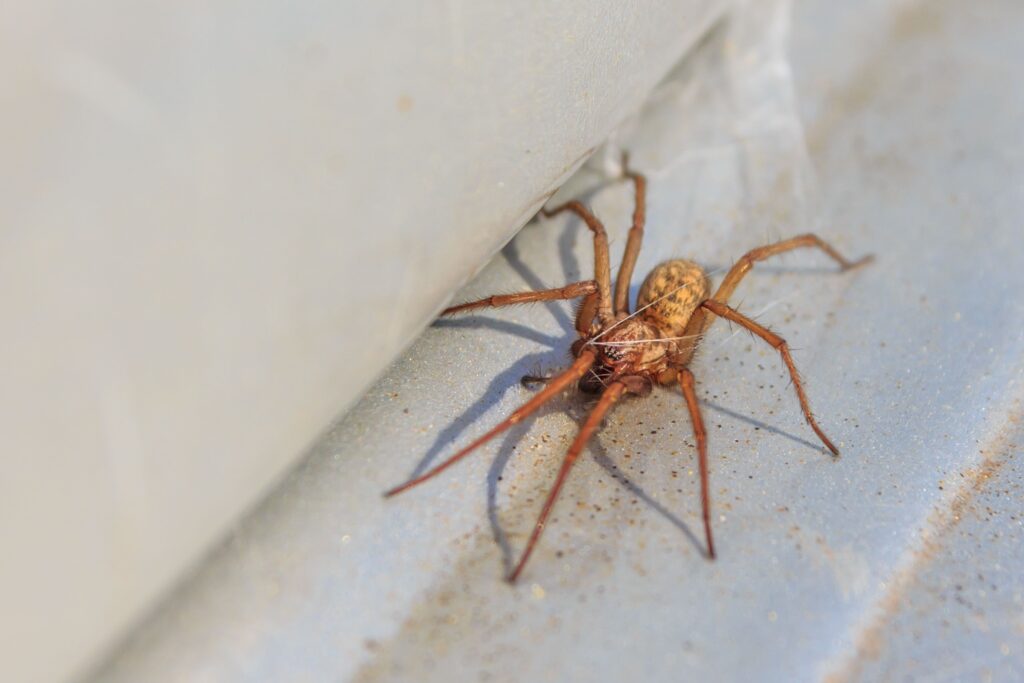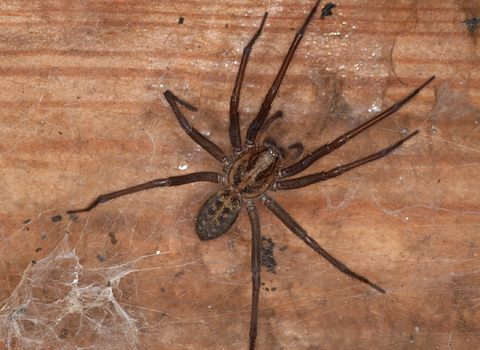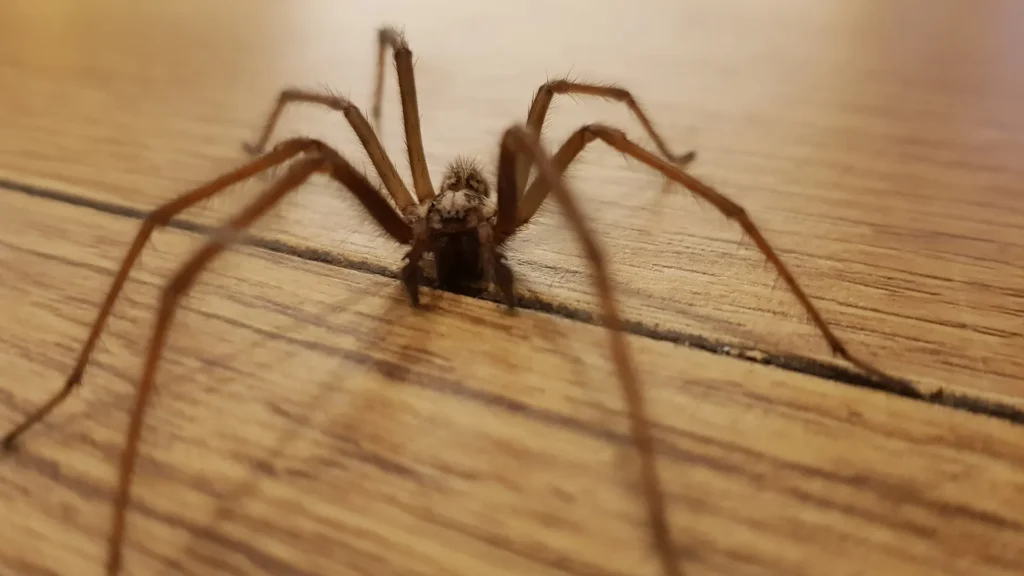Spider Removal Services by Pest Control Xperts in Montclair
Serving homes, apartments, dormitories, hotels, and healthcare offices throughout Montclair, California, and Surrounding Areas
Professional Spider Control for Montclair, Upland, and Claremont Homes
You see it again. A thin, determined line of black spiders marching across your kitchen counter, disappearing into a crack you never knew existed. You grab the store-bought spray, treat the area, and for a day, the problem seems solved. But then they return, perhaps from a different spot, a persistent and frustrating reminder that your home is not entirely your own. This endless cycle is a familiar story for property owners in Montclair and across the San Gabriel Valley. The spiders you see are merely foragers, the disposable workers of a vast, hidden colony led by a queen, making your DIY efforts a temporary illusion undone by the true source of the infestation.
At Montclair Pest Control Xperts, we don’t just spray the spiders you can see. We deliver a strategic, comprehensive spider control solution designed to eliminate the entire colony, including the queen and her nests. We understand the unique environmental pressures and architectural vulnerabilities in Montclair, Upland, Claremont, and beyond. We provide lasting peace of mind by targeting the problem at its core, ensuring the illusion of a spider-free home becomes a permanent reality.
Why Spiders Appear in Montclair and Surrounding Communities
Spider infestations are not random occurrences; they are a direct response to the environment. Here in Southern California, our unique combination of climate, geography, and urban development creates a perfect storm for spiders to thrive and invade our properties.
Climate and Geography: The warm, dry climate of the Inland Empire, including areas like Pomona and La Verne, drives spiders indoors in search of two things: moisture and food. Our hot summers and mild winters mean spider colonies are active nearly year-round, unlike in colder regions. While we lack dense forests, our heavily irrigated lawns, garden beds, and community landscaping create artificial oases of moisture. This constant water source attracts spiders and the smaller insects they prey on, effectively drawing them right to the foundation of your home.
Architecture and Urban Factors: The diverse architecture across our service area presents unique challenges. In historic parts of Claremont and Pomona, older homes with slab foundations often develop small cracks over time, providing perfect, hidden entry points for pavement spiders. In the newer suburban developments of Upland and Ontario, construction can disturb massive, established colonies of Argentine spiders, sending them scrambling for new territory inside your walls. For homes with mature trees and wooden decks, the threat of destructive carpenter spiders is ever-present. These factors, combined with the close proximity of homes, mean an infestation on your neighbor’s property can easily become your problem tomorrow.
Types of Spiders Commonly Found in Southern California
Identifying the specific type of spider invading your property is a critical first step in developing an effective elimination strategy. Our technicians are experts at identifying and treating the common species that plague Montclair area homes and businesses.
Carpenter Spiders
Identification: Typically large, ranging from 1/4 to 1/2 inch, and are usually black or reddish-black. They have a single node between their thorax and abdomen. Behavior: Carpenter spiders are wood-destroying insects. They don’t eat wood, but they excavate it to create smooth tunnels and galleries for their nests. They prefer damp or damaged wood, often found in wall voids, window sills, decks, and door frames. A key sign of their presence is the appearance of “frass,” a fine sawdust-like material they push out of their nests. Risks: A carpenter spider infestation is a serious threat. Over time, their tunneling can compromise the structural integrity of your home, leading to significant and complex repairs. A small frass pile often indicates a much larger, hidden colony working silently within your walls.
Argentine Spiders
Identification: Small, about 1/8 inch long, and light to dark brown. They are known for the massive, well-defined trails they form while foraging. Behavior: Argentine spiders are an incredibly invasive species known for creating “super-colonies” that can contain hundreds of queens and millions of workers. They often nest in shallow soil, under rocks, or along sidewalks. When they invade a home, they seek out moisture and sweet or greasy foods, quickly establishing satellite colonies inside walls, under floors, and in potted plants. Risks: While they don’t cause structural damage, the sheer number of Argentine spiders can make them one of the most difficult pests to control. A single trail can quickly become multiple trails, contaminating food supplies in your kitchen and pantry and creating a constant, overwhelming nuisance.
Odorous House Spiders
Identification: Very small, about 1/16 to 1/8 inch long, and dark brown or black. When crushed, they emit a distinct, unpleasant odor that many compare to rotten coconuts. Behavior: Like Argentine spiders, they are drawn to moisture and sweets. They are highly adaptable nesters, establishing colonies in wall voids, under carpets, near water heaters, or within cabinet spaces. Odorous house spider colonies have multiple queens and are quick to “bud,” meaning a part of the colony will split off to form a new one if threatened. Risks: Their ability to bud makes DIY spray treatments particularly risky. A poorly applied repellent spray can cause one colony to fracture into three or four, spreading the infestation throughout your home and making professional elimination far more complex.
Pavement Spiders
Identification: Small, dark brown to black spiders, about 1/8 inch in size. They are most commonly seen on sidewalks, driveways, and patios, often emerging from tiny mounds of sand or soil. Behavior: Pavement spiders build their nests in or under cracks in the pavement, along curbing, and within the expansion joints of slab foundations. They will forage into homes for food, especially greasy or sweet substances. Risks: They are primarily a nuisance pest. However, because they nest in foundation cracks, their presence indoors often signals a direct and open pathway from the outside, which other, more destructive pests can exploit.
Problems Spiders Create for Montclair Homes and Businesses
An unchecked spider infestation is far more than a minor annoyance. It can lead to tangible issues that affect your property, your well-being, and even your business’s reputation.
- Food Contamination: Foraging spiders march across unsanitary surfaces before crawling through your cupboards and pantry. They can transfer bacteria and pathogens onto your food, posing a health risk to your family or customers.
- Property Damage: This is the most significant risk associated with carpenter spiders. Their constant excavation of wooden structures can weaken support beams, window frames, and subflooring, leading to costly and disruptive structural repairs.
- Constant Frustration and Stress: The presence of pests undermines your sense of comfort and control in your own home. Waking up to spiders in your kitchen or finding them in your bathroom creates a persistent feeling of stress and uncleanliness.
- Risk to Business Reputation: For businesses in Ontario and Pomona, particularly in the food service or hospitality industries, a visible spider problem can be devastating. It can lead to negative online reviews, failed health inspections, and a permanent loss of customer trust.
Signs of an Escalating Spider Infestation
How do you know if you have a few stray spiders or a full-blown infestation? The colony is an expert at staying hidden, but it leaves behind clues. Recognizing these signs can help you understand the severity of the problem before it spirals out of control.
- Consistent Spider Trails: A single spider might be a scout, but seeing consistent, well-defined trails of spiders day after day, especially in the kitchen or bathroom, is a clear indicator of an established colony nearby.
- Frass or Sawdust Piles: Finding small, unexplained piles of fine wood shavings on your floor, along baseboards, or on windowsills is a classic sign of a carpenter spider colony excavating wood above.
- Winged Spiders Indoors (Swarmers): The appearance of winged, flying spiders inside your home is an undeniable sign of a mature, indoor colony. This is the colony’s attempt to reproduce and expand by sending out new queens to establish more nests.
- Wood That Sounds Hollow: If you tap on a baseboard, wall, or door frame and it sounds unexpectedly hollow or papery, it may be because carpenter spiders have carved out galleries inside.
- Unusual Odors: A musty, stale smell in a specific area can sometimes indicate a large, hidden nest, especially from species like the Odorous House Spider.
Why Professional Extermination is Essential for Spider Removal
This is the moment of truth for many frustrated property owners. After weeks of wiping up trails, setting out bait traps, and spraying repellents, the spiders keep coming back. The reason is simple: you have only been fighting the symptoms, not the disease. Store-bought products create a false sense of security, an illusion of victory that is quickly undone by the resilient, hidden colony.
Over-the-counter sprays and baits are designed to affect only the foraging spiders they touch. These foragers represent a tiny, expendable fraction of the total colony population. For every hundred spiders you eliminate, the queen, safe in her nest deep within a wall or under your foundation, can produce thousands more to replace them. She is the engine of the infestation, and DIY methods have absolutely no way of reaching her.
Worse yet, improper treatment can make the problem explode. When certain species, like Odorous House Spiders or Pharaoh Spiders, sense a threat from a repellent chemical, the colony doesn’t die. It fractures. This process, known as “budding,” causes queens to take a group of workers and flee to a new, safe location within your home, instantly turning one massive infestation into several independent ones. Your one kitchen problem has now become a kitchen, bathroom, and bedroom problem.
True spider elimination is not about killing the spiders you see. It is about eradicating the source. Professional-grade, non-repellent baits and materials are the only way to achieve this. Our technicians use advanced products that foragers carry back to the nest, sharing them throughout the colony and ultimately reaching the queen. This is the only path to complete and lasting colony destruction.
Our Strategic Spider Removal Method
At Montclair Pest Control Xperts, we deploy a methodical, multi-step process to ensure we resolve your spider problem at its source. We build a protective barrier around your property and your peace of mind.
Step 1: Comprehensive Inspection and Consultation
Our process begins with a thorough inspection of your property. A highly trained technician will identify the specific spider species, locate foraging trails, assess entry points, and determine the likely locations of the primary nests. We listen to your observations and develop a complete picture of the infestation’s scope.
Step 2: Customized Treatment Plan
There is no one-size-fits-all solution. Based on our inspection, we will design a customized treatment plan. This may involve using specialized, low-impact baits in key areas, applying non-repellent materials to exterior entry points, and treating interior wall voids. Our focus is always on targeting the colony with precision while keeping your family and pets in mind.
Step 3: Exclusion and Prevention
Once we have dealt with the existing colony, we help you prevent a future one. Our technician will provide expert recommendations on sealing cracks and crevices, managing moisture around your foundation, trimming vegetation away from the house, and other crucial preventative measures. This proactive approach is key to long-term control.
Step 4: Follow-Up and Monitoring
Our commitment doesn’t end after the initial treatment. We will schedule follow-up visits to monitor the situation, ensure the colony has been completely eliminated, and check that our protective barriers remain effective. We adjust the strategy as needed to adapt to seasonal changes and property conditions.
Why Montclair Relies on Montclair Pest Control Xperts
When you work with us, you are partnering with a team that has an intimate understanding of the pest challenges specific to Montclair, Upland, La Verne, and the surrounding areas. We live and work here, and our reputation is built on delivering real solutions to our neighbors. Our approach is not about temporary fixes; it is about a singular focus on total colony elimination. We use advanced application methods and materials with the well-being of your household in mind. Your long-term relief from pests is our primary objective.
Stop fighting the losing battle against endless spider trails. The illusion of DIY control is a frustrating and ineffective cycle. Let us provide the definitive, professional solution that removes the problem at its source, giving you back the clean, comfortable, and pest-free home you deserve.
Contact us today to schedule a comprehensive inspection and take the first step toward a spider-free property.
Proudly Serving Montclair and the Surrounding San Gabriel Valley Communities
Our primary service areas include Montclair, Upland, Claremont, La Verne, Pomona, and Ontario. We provide expert spider control to properties in the following zip codes: 91763, 91784, 91786, 91711, 91750, 91766, 91767, 91768, 91761, 91762, and 91764.





